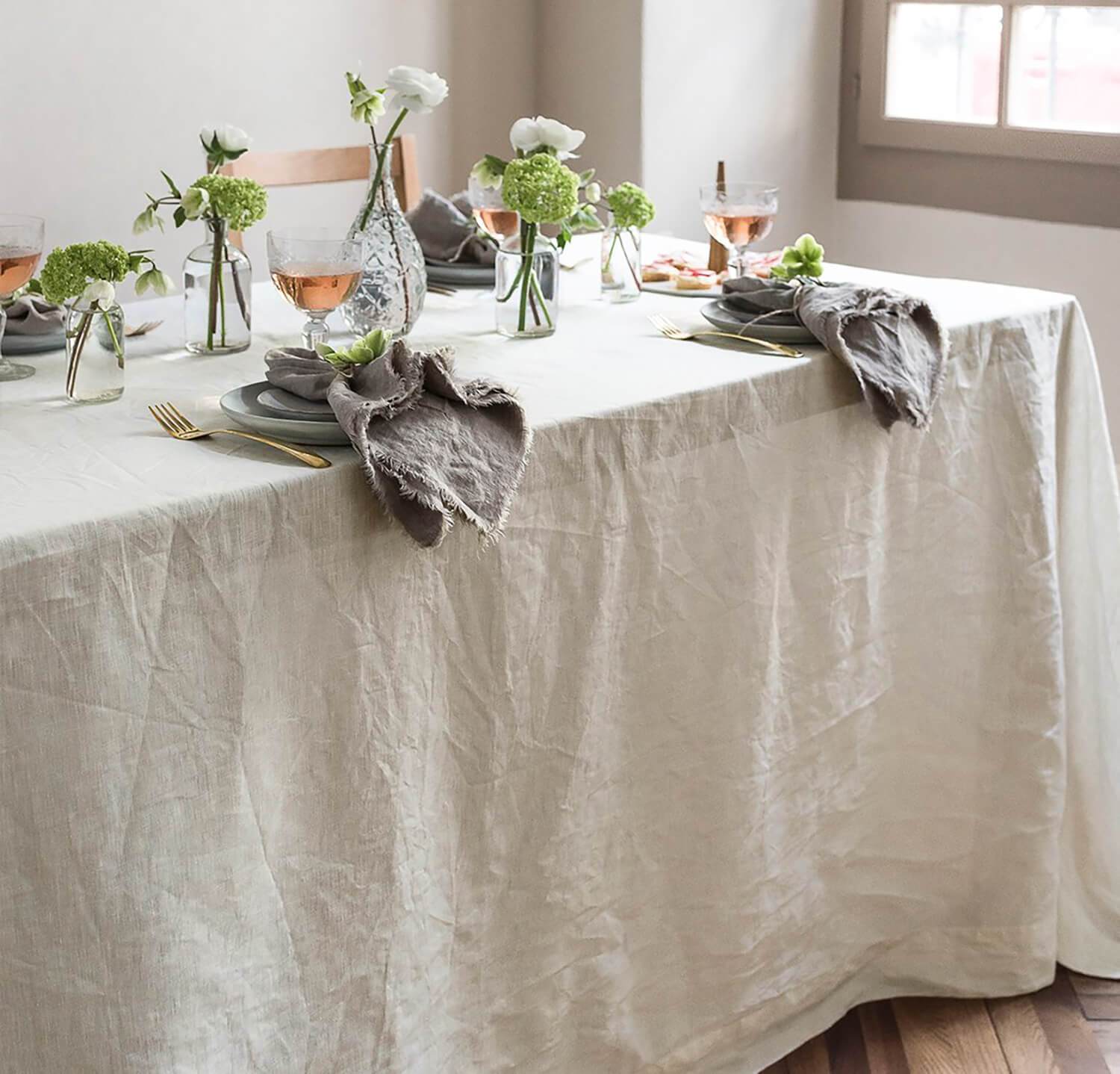Versatile Table Cloths: Styles and Fabrics for Any Kind Of Event
Versatile Table Cloths: Styles and Fabrics for Any Kind Of Event
Blog Article
Linen Material Advancements: Discovering Modern Trends and Creative Applications in Style and Textile Market
From lasting manufacturing techniques to innovative weaving modern technologies, the development of linen is reshaping the landscape of the textile industry. As we dive right into the realms of imaginative style applications and the emergence of bed linen blends and crossbreed materials, a brand-new phase unravels in which bed linen's function in future fabric advancements takes center stage.
Sustainable Practices in Bed Linen Manufacturing
Sustainable practices in bed linen manufacturing have become increasingly critical in the fabric sector's efforts to lessen environmental influence and promote moral sourcing approaches. Bed linen, a natural fiber stemmed from the flax plant, offers a series of advantages such as biodegradability, resilience, and breathability. Nonetheless, standard techniques of bed linen production can entail substantial water usage, chemical use, and energy-intensive processes.
To attend to these challenges, lots of textile producers are taking on sustainable techniques throughout the linen manufacturing process. This includes sourcing flax from natural ranches that avoid hazardous pesticides and chemicals, implementing water-efficient retting strategies to extract fibers from the flax stalks, and using eco-friendly dyes and finishes. In addition, some firms are buying renewable energy sources to power their manufacturing facilities and minimizing waste via recycling and upcycling campaigns.
Technological Improvements in Bed Linen Weaving
With the growing focus on sustainable practices in bed linen production, the textile industry is currently observing a surge in technological developments specifically targeted at revolutionizing the art of bed linen weaving. These innovations are improving the means bed linen fabrics are generated, providing increased effectiveness, quality, and creative thinking in weaving techniques.
One of the essential technological improvements in linen weaving is the assimilation of electronic looms. These innovative looms are furnished with software application that permits for detailed and intricate designs to be woven with accuracy. By digitizing the weaving process, producers can attain greater consistency and accuracy in their bed linen fabrics.
Moreover, advancements in yarn spinning technology have enabled the manufacturing of finer and even more durable linen threads - table cloths. This leads to softer and smoother bed linen materials that maintain their high quality even after numerous usages and cleans
Additionally, the advancement of green dyeing processes and surfaces for linen materials is getting grip. These sustainable methods not just lower the environmental influence however likewise accommodate the raising customer demand for fairly created textiles.
Creative Style Applications for Linen
Innovative creative approaches are significantly forming the creative style applications for linen in the textile industry. Bed linen's natural aesthetic allure and capability to mix with other textiles make it a preferred option for producing one-of-a-kind garments and devices that cater to the environmentally mindful customer.
Additionally, developers are try out bed linen in home design, using its durable and breathable nature to craft fashionable home furnishings such as drapes, bedding, and upholstery. The structure and drape of linen bring a feeling of elegance and convenience to indoor rooms, including a touch of elegance to modern-day homes.

Linen Blends and Hybrid Fabrics

Hybrid textiles, on the other hand, take the principle of mixing a step better by incorporating extra aspects such as metal strings, recycled products, or conductive fibers. These innovative textiles not just broaden the style opportunities however additionally introduce practical facets like conductivity, antimicrobial properties, or boosted resilience. Hybrid fabrics are significantly being utilized in numerous industries, including fashion, indoor style, and technological textiles, where the need for multifunctional materials gets on the rise.
Linen's Role in Future Textile Innovations

In the world of future textile advancements, linen is anticipated to be an essential gamer in the advancement of advanced practical fabrics. Scientists and designers are exploring methods to improve linen's fundamental top qualities through technical developments, such as integrating clever textiles, nanotechnology, and performance finishes. These technologies aim to elevate linen's efficiency characteristics, making it suitable for a broader variety of applications, from activewear to protective clothing.
Additionally, the combination of bed linen with other natural or artificial fibers opens up limitless opportunities for developing unique textiles with unique properties and capabilities. By leveraging linen's features and discovering cutting-edge blends, the textile market is poised to introduce amazing developments that deal with evolving consumer demands and sustainability demands.
Final Thought
Finally, the exploration of sustainable methods, technological developments, creative design applications, linen blends, and its function in future textile technologies highlight the constant evolution of linen material in the modern design and fabric sector. With a concentrate on development and creativity, the convenience and eco-friendly nature of bed linen make it an important product for designers and makers alike, paving the way for more advancements and improvements in the area of fabrics.
As we delve right into the worlds he said of innovative layout applications and the appearance of bed linen blends and crossbreed materials, a new chapter unravels in which linen's role in future fabric developments takes facility stage.
Discovering the combination of bed linen with various other fabrics has led to the introduction check of cutting-edge blends and crossbreed fabrics in the contemporary fabric market. Linen blends provide an one-of-a-kind combination of the qualities of bed linen with those of other fibers, resulting in fabrics that have improved residential properties such as raised sturdiness, enhanced draping, and reduced wrinkling.The advancement of bed linen blends and crossbreed fabrics has established the stage for Bed linen to play a pivotal duty in driving future textile advancements.In the realm of future fabric developments, linen is expected to be a crucial gamer in the growth of advanced useful fabrics.
Report this page